 Leading Blog | Posts by Month |
 Leading Blog | Posts by Month |
05.31.18

LeadershipNow 140: May 2018 Compilation
See more on
Posted by Michael McKinney at 09:29 AM
05.24.18

The Journey to Servant Leadership
I When Art Barter bought Datron World Communications in 2004, he was determined to create a servant leadership culture in his organization. In doing so the company went from $10 million in annual sales to $200 million today. He explains, “by following the principles of servant leadership, we were able as a committed and engaged team to create a growth mindset and far exceed our normal production with basically what we already had.” In The Art of Servant Leadership II, Barter shares the journey from power-based leadership to servant leadership. Inside you will find the ups and downs, the trials and triumphs, and the rewards of making the journey. What worked and what didn’t. Making a change from a power-based leadership style to a servant leadership style is not easy and must begin at the top. At the beginning, there are trust issues. And quite frankly, it is a difficult approach to wrap your mind around. It’s unnatural and some otherwise great people will never make the transition. It’s an ongoing process—a cycle of education, understanding, applying, and reflecting. Educate to Own Leaders must educate to the point of ownership. It has to be ongoing and consistent. Barter began by preaching more or less but soon learned that if they were going to own it, they and to be part of the educational process. Based on the principles of servant leadership, he asked his team to define what servant leadership looked like to them and then said let’s do that. “Let them decide up front what that will look like; it allows them to start their transformation because they own that definition.” Barter moved from educate-to-train to educate-to-own. It is important too, says Barter, that the leader’s voice is in the process so that everyone is speaking the same thing and that you meet people where they are. Understand and Empower When things get tough it’s easy for a leader to fall back on power. And when you do it takes humility to face the real issue. Barter said that he had to look at himself at times and ask, “’What did I do to generate that response?’ It took me a while to get to the point where I started looking inside first.” He adds, “They can’t put me on a pedestal and expect me to be perfect, because I’m going through a continual transformation right along with them.” As to empowering others, “there are times when the best thing you can do to help people transform is to stop teaching them and just encourage them, giving them space to work on their own transformations.” Not just listening but listening to understand, empowers people. Apply You can’t put an organization on hold to make the transformation to a servant leadership culture. You must be profitable and self-sustaining. But servant leadership stresses the means more than the results. It is a culture that makes it safe for failure. Encouraging others and one-on-one mentoring helps to send that message. Here are two key thoughts that caught my attention in this section: Someone on your team isn’t performing well. Maybe this person is dealing with some personal issues, or perhaps is struggling with what he or she is being asked to do. What would happen if two other people on the team took that person aside and helped him or her get through those challenges and stayed with the team member until the challenges were resolved? What would that look like in today’s workplace? In most workplaces, a person who starts falling falls alone because nobody wants to be part of it. Reflect Self-reflection and team reflection are necessary in a servant leadership culture. At Datron the create what they call a “fascination-for-the-truth” environment. It begins by never killing the messenger. They also host monthly get-togethers and quarterly off-sites. They invest money into developing the team by sending people to conferences, bringing in outside speakers, and encouraging reading. Confrontations at Datron are meant to restore relationships and not to convince the other person that you’re right and they’re wrong. The real test of servant leadership is if those you are serving are growing.   
Posted by Michael McKinney at 10:45 PM
05.22.18

Co-Active Leadership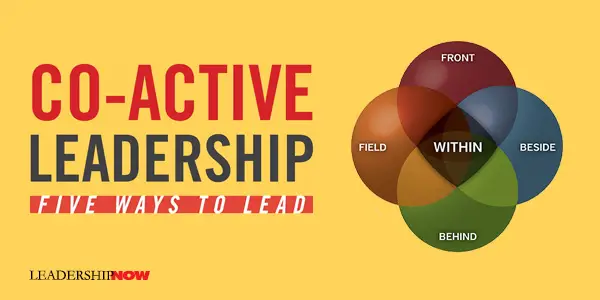
I In Co-Active Leadership, Karen and Henry Kimsey-House define leadership as “those who are responsible for their world.” So much of leadership is about initiative—taking responsibility. In this sense, anyone can choose to lead. “Leadership development, then, becomes about growing the size of the world for which one is able to be responsible.” Naturally, this would mean not only becoming “first-class noticers” but increasing one’s competence. A multidimensional view of leadership allows for anyone to lead. The authors have created the Co-Active Leadership model that is multidimensional. “Everyone, at different times, plays all five roles, shifting from dimension to dimension as the circumstances and the needs of the moment require.” The five dimensions are: 
Co-Active Leader Within This is where all leadership begins—from within. It begins with taking responsibility for who you are, knowing your values, and then leading in alignment with those values. I agree with the authors that what we need to lead is within us, but leading with a “take me as I am” approach can lead to disaster. Self-awareness is about seeing who I am in relation to those I impact and asking ourselves if this is the person I want to be. Opening our heart is not enough. The bigger question is what is motivating the heart. From “Within” we move into the other dimensions as appropriate. Co-Active Leader in Front Leading in front is not about being in charge. A Co-Active Leader in Front fosters a “connection with the people who are following them and stand firmly for a clear direction and purpose.” They understand too that it is not about them, it’s also about creating the space for others to step up and share their knowledge and creativity. It’s about providing guidance. Co-Active Leader Behind This is about service. Co-Active Leaders Behind “focus on providing whatever is needed and, through openhearted and enthusiastic participation, advance the action in a way that holds everyone together.” They are most concerned about the whole. It’s about encouraging others. Co-Active Leader Beside Two can be better than one. Co-Active Leaders Beside “take responsibility for their world by creating their partnership around a shared vision and intention and supporting each other’s strength to generate a powerful synergy in which the whole is much greater than the sum of the parts.” It’s about partnering with team members. Co-Active Leader in the Field The field referred to here is “the energetic field that surrounds all of life and offering us information all the time.” So Co-Active Leaders in the Field is “about expanding our attention beyond individual people to connect with the energetic field that surrounds life.” It’s about drawing on insights from beyond the rational mind. It about sensing and connectedness. Seeing leadership as more than top-down command, frees anyone to lead. Seeing leadership in the multi-dimensional way the authors present here, enriches a leaders responses and approaches to any given situation. 
Posted by Michael McKinney at 11:45 AM
05.18.18

Burn the Business Plan
I The highly-romanticized, high-tech startups that we read about and want to emulate are less than seven percent of all start-ups and they experience the highest failure rate of all business startups. Eighty percent disappear within five years. Most entrepreneurs never went to college, and most did not start their companies until they were well along in their careers. The average entrepreneur is nearly forty years old when he launches, and more than eighty percent of all new companies are stated by people over thirty-five. More entrepreneurs are between forty-five and fifty-five than any other cohort, and entrepreneurs over fifty-five now create more companies than those under thirty-five. And—another surprise—the chances of a new company surviving rises with the age of the entrepreneur. What these high-tech startups have in common with all other entrepreneurs is that they don’t follow a business plan. The detailed and rigid planning of your typical formal business plan is of little value once the business gets underway. Just as German Field Marshal Helmuth Karl Bernhard Graf von Moltke once observed, “No plan survives first contact with the enemy,” “it is rare,” writes Schramm, “to find an entrepreneur who reports that his business plan was of much use…. Entrepreneurs must learn to dance to the market’s ever-changing tempo and rhythm. Planning doesn’t help and is mostly a waste of time.” Microsoft, Apple, Facebook, Amex, Disney, GE, Walmart, and Google are just a few examples of companies that began without writing a formal business plan. To build a successful company, one has to be able to change direction as shifting facts and circumstances dictate. In my experience running a manufacturing company for over 30 years, Schramm is right on. While I believe that the basics of running a business and the type of mindset that is required can be taught or presented, I would agree that you can only learn by doing. “There is no time-tested body of knowledge that will improve the probability that a startup will be successful.” As Steve Wozniak, Marc Randolph, and many others have suggested, a great way to learn entrepreneurship is by working in a big company. “The average entrepreneur works for someone else for nearly fifteen years before starting his own business.” Many entrepreneurs who started their own careers in large corporations regarded them as critical to their subsequent success. Most importantly, they learned the culture of business, how big companies did or did not do a good job of serving their customers, and their customers’ continuously changing needs. Building a company takes time. Rather than flipping their companies, most successful founders work at it for the rest of their lives. When you begin everything changes. “While many aspiring entrepreneurs think that starting a company is all about one good idea, in fact, successful entrepreneurs know that their first idea was seldom what made their company successful.” And here’s something to think about: “Failure rates are considerably higher for companies that are started with the intention of a short-term sale.” Every startup has one CEO. The myth that two entrepreneurs coming together makes for a better company is just that, a myth. A realistic “look at the history of startups shows that every company, even those claiming multiple founders, had just one person who functioned as the ‘entrepreneur-in-chief.’ She is the person who sparked the idea, first articulated the vision for the company and brought others together; the person who functions as the company’s driving force, without whom the startup never would have happened.” Another reason success as an entrepreneur favors age is that “creating a new product or service is an organic process, one that is shaped by background, experience, and acuity of the innovator.” “The average age of an inventor awarded a patent is forty-seven. The reason? Innovation involves a synthesis of accumulated knowledge, much of it subconscious, that the inventor has absorbed and compiled over his life.” If you are aspiring to be an entrepreneur, you would be wise to read widely across many fields and disciplines. Innovators are curious and have a voracious appetite for learning. Schramm tells the stories of Dyson, Head, Kasbar, Stebbins and others who “weren’t even sure that what they were toiling to achieve was a ‘company,’ they were just sure that they had really good ideas. Other interesting ideas Schramm covers:
Burn the Business Plan is a fascinating and accurate look at what it means to be an entrepreneur. It should be required reading in business schools and by anyone contemplating a startup. Schramm tells interesting stories of entrepreneurial successes and failures all of which add to the value of this book. 
Posted by Michael McKinney at 04:13 PM
05.04.18

Leading Clarity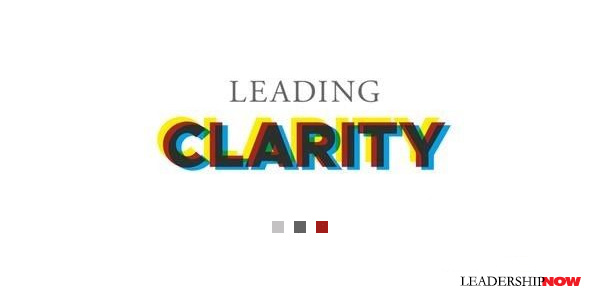
T In Leading Clarity, Brad Deutser states that “Clarity operates on the truth that everything is connected.” Clarity connects. “Clarity is the foundational fabric that weaves together dreams, goals, initiatives, concerns, challenges, and triumphs.” Clarity not only defines an organization, but it also protects and stabilizes it too. Considered as a destination, clarity can be lost or obscured the moment the landscape changes, or the environmental factors dim your view. In clarity, we can see all the factors, recognize them for what they are and what they can become, and create connections that can be relied on to establish or reestablish equilibrium and an environment for growth. This distinction matters to us because especially in times of great change and emerging opportunities, we can easily lose our way—our focus. Businesses fail—people fail—due to a lack of clarity. When disruptions come it is easy to move out of clarity. “Clarity become central to your ability to not only visualize, but actualize your performance.” Clarity should transcend your environment. When we are in clarity, we can maintain a constant flow of energy and maintain connections. Deutser identifies 12 circuit breakers that disconnect us from clarity: fear, ambivalence, clutter, labeling, doubt, impatience, boredom, conflict, overconfidence, physical depletion, inference or shallowness, and resources. This comment was interesting regarding our need to tolerate ambiguity: Being in clarity allows space where we wait for what we don’t quite understand to emerge, which keeps energy available and flowing rather than being boxed in, covered up, or mistakenly shelved through what’s already known. Too often we miss lessons, opportunities, and shifts in thinking, because we want to quickly fill the space of not knowing. Clarity needs structure and has to be created. So how do create this state of clarity? Deutser begins by working inside-the-box. We all work within constraints or within our particular box—a box of our own making. So we start by understanding our box. From there we can grow and/or change our box. When working in the box, your playing field is more defined and there is greater understanding of specifics and their possible impact on your desired outcome. There is also more empathy and connectivity in the box because there is definition. … The box provides a form of clarity for all to grab hold of and work toward. The powerful point is that the box is of your own making. You should also understand that while the sides of the box exist, they can be permeable, to let things flow in and out, and be flexible, to expand and contract when deemed necessary; but, once inside, each element serves to interact with the whole.
Direction: What are our values? Where are we headed? Is leadership aligned with values? Operations: Do we adapt well to change? What are our metrics? Do our systems and processes ensure high-quality work? People: Do we develop our team? Do we give timely and consistent feedback? Are we highly collaborative? Engagement: Coaching and Development, Talent Management, and Team Capabilities Organizational Identity: Who are we? Why do we exist? What motivates us? This side—your identity—is the foundations of everything you do. It is the foundation from which you can build the space for your thinking to exist in. Environmental Factors: What external factors affect or shape who we are? What do competitors do that we would never identify with or do ourselves? This framework helps you to understand who you are, where you are going, and how you work. As individuals and organizations we all have constraints. So it’s really what’s in the box that drives performance. Working within the box provides the context where innovation is likely and more importantly, implementable. When you understand the box it is easier to work and be productive within it. The box gives intentionality to everything you do. There’s no such thing as perfect, but “there is such a thing as being whole, which signifies the big picture as it weaves al the smaller pieces together. Being whole in this respect denotes a sense of closure that comes after all the parts fit together. Striving to be in clarity is about the process of becoming whole, of intentionally incorporating all the important aspects of your business into one connected form that accounts for the outside world as well.” It is the magic of your own ability to control [the construction of your box] that both protects and nourishes and becomes that which withstands and even thrives in chaos, change, and uncertainty. If you think of the sides of that box as being permeable rather than fixed, it frees the flow of input information in and the release of old ways and toxic byproducts out and away from your core. You build your own box. So what is your box and what do you need it to be? 
Posted by Michael McKinney at 06:41 AM
05.01.18

First Look: Leadership Books for May 2018Here's a look at some of the best leadership books to be released in May 2018. Don't miss out on other great new and future releases this month.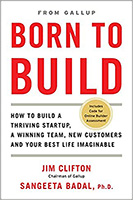 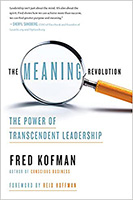 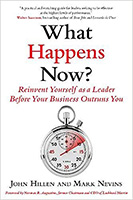 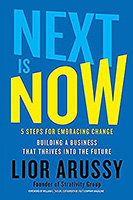 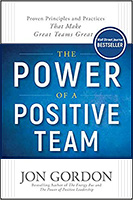
For bulk orders call 1-800-423-8273  Build your leadership library with these specials on over 39 titles. All titles are at least 40% off the list price and are available only in limited quantities. "Elon Musk has always been an introvert thinker...where a lot of people would go to a great party and have a great time and drink and talk about all sorts of things like rugby or sports, you would find Elon had found the person's library and was going through their books." — Errol Musk
Posted by Michael McKinney at 07:35 AM
|
BUILD YOUR KNOWLEDGE


How to Do Your Start-Up Right STRAIGHT TALK FOR START-UPS 
Grow Your Leadership Skills NEW AND UPCOMING LEADERSHIP BOOKS 
Leadership Minute BITE-SIZE CONCEPTS YOU CAN CHEW ON 
Classic Leadership Books BOOKS TO READ BEFORE YOU LEAD |
|